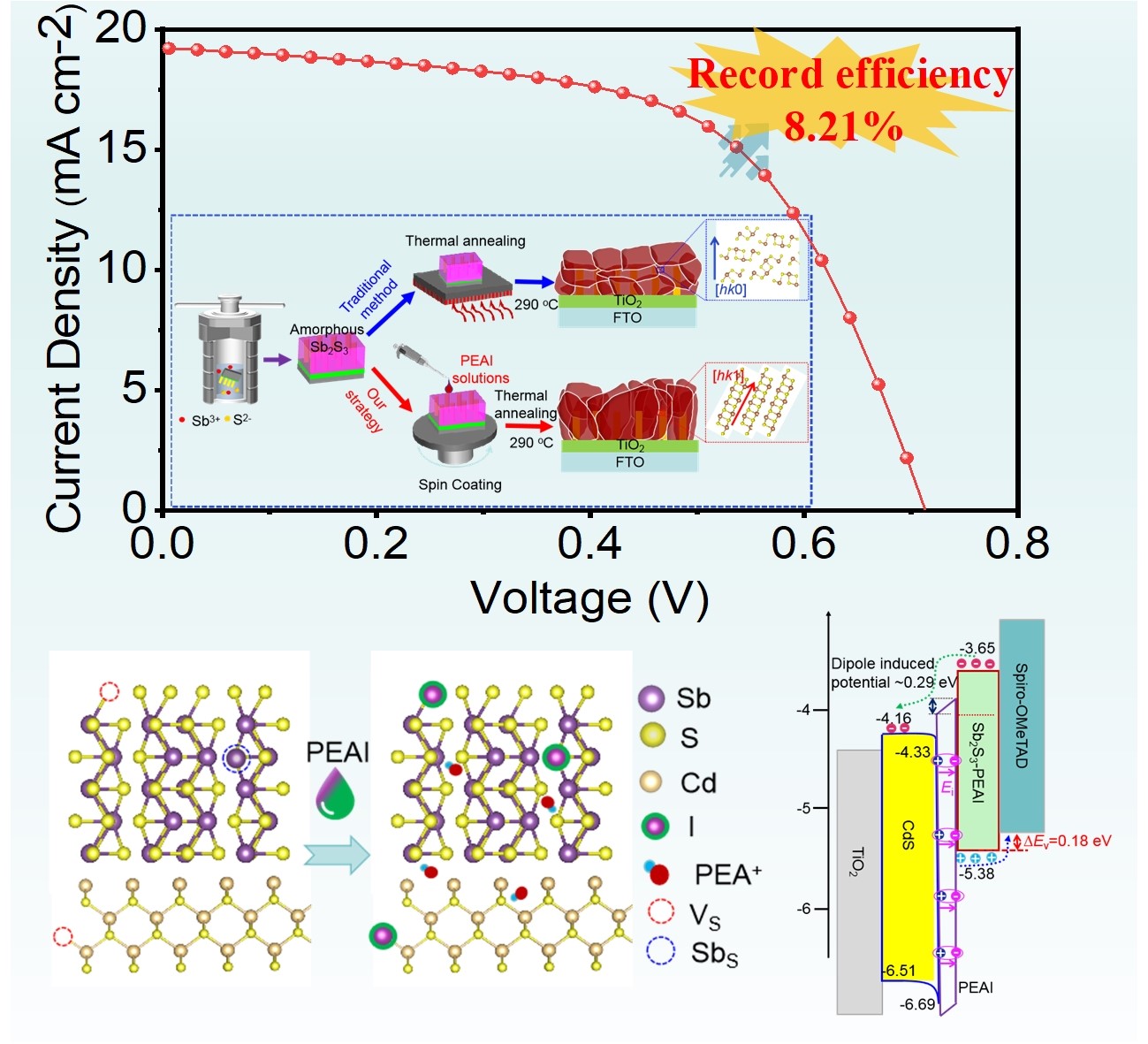
A team led by Professors WANG Mingtai and Chen Chong from the Institute of Solid State Physics, the Hefei Institutes of Physical Science of the Chinese Academy of Sciences, has developed an antimony trisulfide (Sb₂S₃) solar cell with a record conversion efficiency of 8.21%. This achievement marks the highest performance ever reported for this type of solar cell.
The study was published in Advanced Energy Materials.
Sb₂S₃ has drawn growing attention as a promising light-absorbing material due to its abundance, non-toxicity, and favorable optoelectronic properties. However, devices fabricated via solution methods typically suffer from high defect densities and interface mismatches, which limit carrier transport and have restricted photovoltaic conversion efficiencies to around 6–7%.
To overcome these challenges, the team proposed a full-dimensional defect passivation approach using the permeation effect of degradable phenethylammonium iodide (PEAI) in amorphous Sb₂S₃ films. PEAI pretreatment of amorphous Sb2S3 films enables [hk1]-oriented crystallization, full-dimensional defect passivation (bulk and interfaces), and dual-interface energy-level reconstruction via Cd-I and Sb-I bonding. The PEAI reduces CdS surface energy and preferentially adsorbs on Sb₂S₃ (211) planes, promoting [hk1] orientation and enhancing carrier transport. Moreover, the penetrated PEAI leads to a 3.7-fold increase in carrier lifetime, verifying effective defect suppression.
As a result, the researchers successfully fabricated an Sb₂S₃ bulk heterojunction solar cell with a conversion efficiency of 8.21%—the highest reported to date.
According to the team, this work not only sets a new performance benchmark for Sb₂S₃ solar cells but also provides valuable insights for the design of next-generation high-efficiency thin-film solar cells.

Schematic diagram of full-dimensional defect passivation strategy, photovoltaic performance, defect passivation and band structure optimization (Image by WANG Yang)